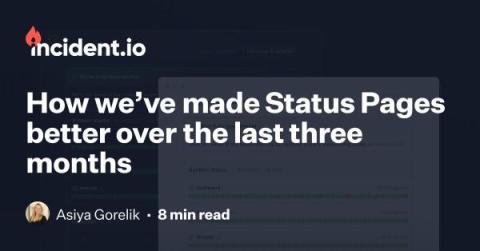Operations | Monitoring | ITSM | DevOps | Cloud
Incident.io
Better learning from incidents: A guide to incident post-mortem documents
If you’re just starting out in the world of incident response, then you’ve probably come across the phrase “post-mortem” at least once or twice. And if you’re a seasoned incident responder, the phrase probably invokes mixed feelings. Just to clarify, here, we’re talking about post-mortem documents, not meetings. It’s a distinction we have to make since lots of teams use the phrase to refer to the meeting they have after an incident.
Clouds, caches and connection conundrums
We recently moved our infrastructure fully into Google Cloud. Most things went very smoothly, but there was one issue we came across last week that just wouldn’t stop cropping up. What follows is a tale of rabbit holes, red herrings, table flips and (eventually) a very satisfying smoking gun. Grab a cuppa, and strap in. Our journey starts, fittingly, with an incident getting declared... 💥🚨
How we've made Status Pages better over the last three months
A few months ago we announced Status Pages – the most delightful way to keep customers up-to-date about ongoing incidents. We built them because we realized that there was a disconnect between what customers needed to know about incidents, and how easily accessible this information was. For example: As we built them, we focused on designing a solution that powered crystal-clear communication, without the overhead — all beautifully integrated into incident.io.











